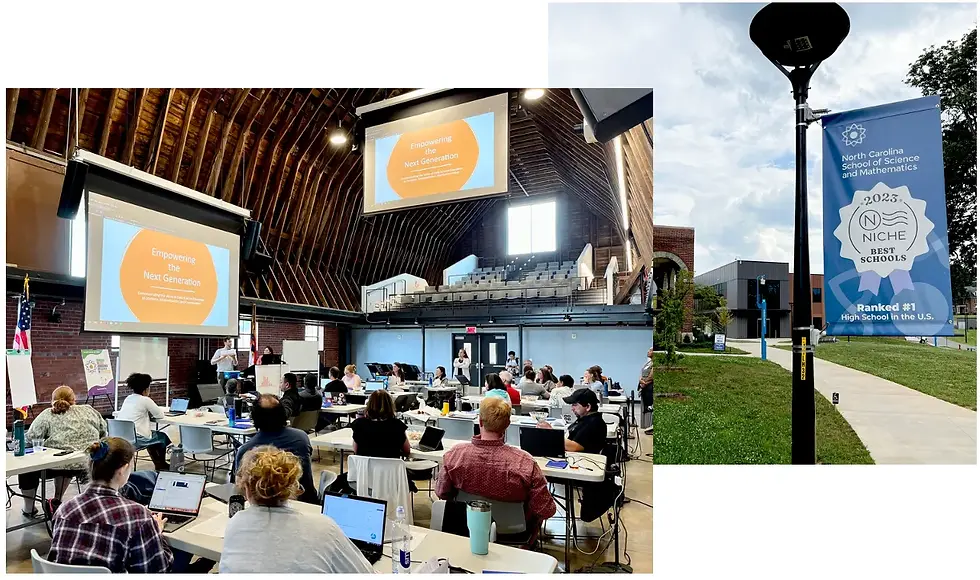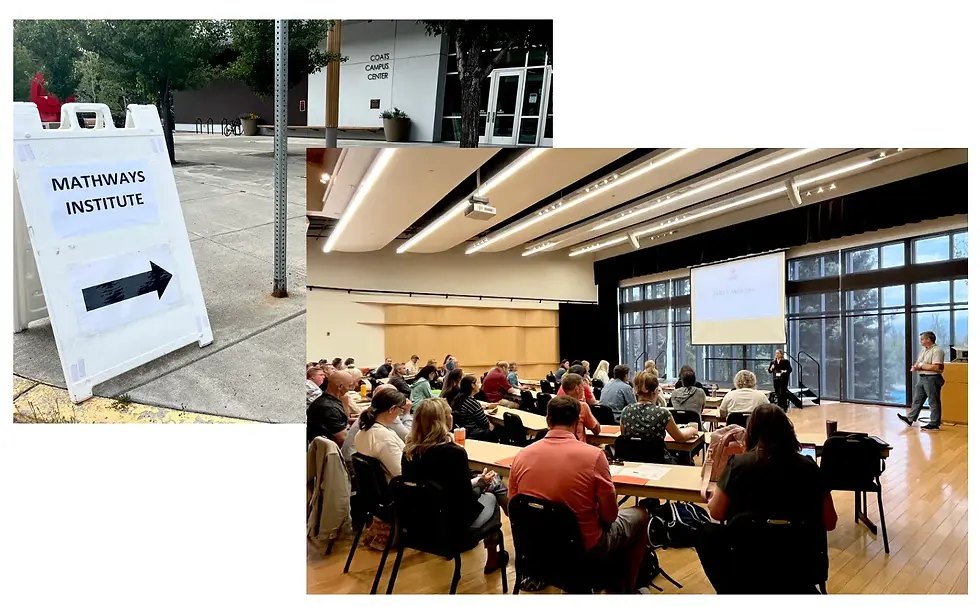Coast to Coast, Teachers Train for Data Science
- Zarek Drozda

- Aug 21, 2023
- 3 min read
8+ states host summer institutes for teacher learning in data science
As U.S. education begins to respond to the era of Artificial Intelligence (AI), educators were gearing up to teach the fundamentals fueling these emerging technologies: data.
This summer, teachers in nearly every part of the country assembled to tackle these subjects head-on, together. The mission: how to incorporate modern technology, data analysis techniques, and 21st-century problem-solving into the existing K-12 curriculum — that will prepare today’s students for the world they will graduate into tomorrow.
From state to state, teachers joined practicums — in some cases boarding together on the same campus — to tackle these new technologies head-on. In many cases, they broke precedent or created entirely new programming for educator professional learning. Every program focused on peer collaboration.

The North Carolina School of Science and Mathematics — a public STEM school in Morganton, North Carolina — was the first high school in the country to require data science for all of its graduates. As part of their summer institute, they shared how they adopted college-level data science courses from the University of California Berkeley, with 50 teachers joining from around the state.
How were so many summits “suddenly” planned and organized? In North Carolina, a STEM school that began offering data science in 2019 invited teachers from around the state, sharing lessons learned and workshopping new program designs. In Virginia, the State Department of Education facilitated a weekly teacher cohort throughout the entire summer to prep for this coming school year, building upon course and standards development from the prior two years. In Arizona, the University’s Data Science Academy invited teachers for a series of workshops on how to adapt introductory data science to K-12 students.
In each state, training opportunities may have originated differently, but all arrived at the same conclusion: data is now fundamental, and will only become more important for students to know deeply.
Convenings were organized in AZ, MA, MI, NC, OH, OR, UT, VA, and virtually, in addition to countless locally-focused or district-sponsored programs. Stated another way, we have moved from research & innovation to early scale for data science education in K-12.

In collaboration with the Oregon Department of Education, the Central Oregon STEM Hub and High Desert Education District hosted the inaugural “Oregon Summer Math Institute” to bring over 80 teachers from around the state, including from rural communities. Boarding in the Community College’s dormitories for a week, educators worked through data teaching intensives to learn multiple curricula programs and design options, including several data science courses, statistics, and quantitative reasoning programs.
While ChatGPT is new, these programs benefit from drawing upon over a decade of research and implementation for K-12 data science programs, and an even richer education research literature for statistics, mathematical modeling, and computer science education. They also coalesce research surfaced from the National Academies of Sciences, to the American Statistical Association, to the Friday Institute for professional learning and classroom practice.
Most important is why teachers are jumping in. Our team was lucky enough to tag along on just a few of these convenings and workshopped these subjects together with anyone who joined. Each time, we asked teachers directly their “why” — why they chose to spend their summers learning new technology and a decidedly challenging subject. These were just some of the reasons we managed to capture:
“I think it’s important for my students to understand these new technologies, and to understand why mathematics is so important for them.” “My students enjoy learning math through authentic problems.” “I want to be doing something innovative for my students.” “I have students who start small businesses or help run their families business after they graduate. They need data analysis skills to start and to compete today.”
Many reasons. A clearly changing world. A mission to help ensure U.S. education is relevant, in the context of technology that can automate everything: from coding to writing to calculating.
Teachers are finding ways to prepare our students regardless. We need the whole system to move with them.

.jpg)